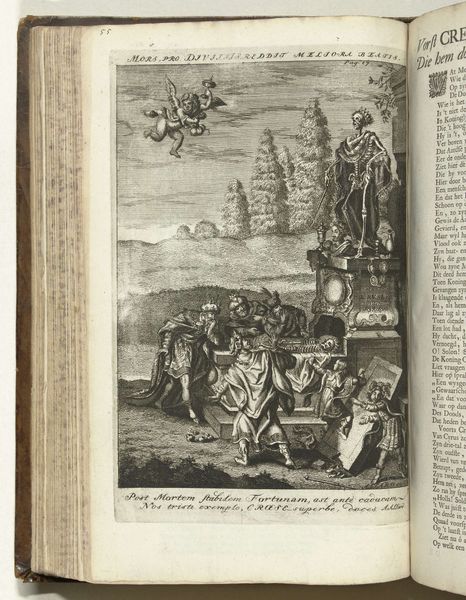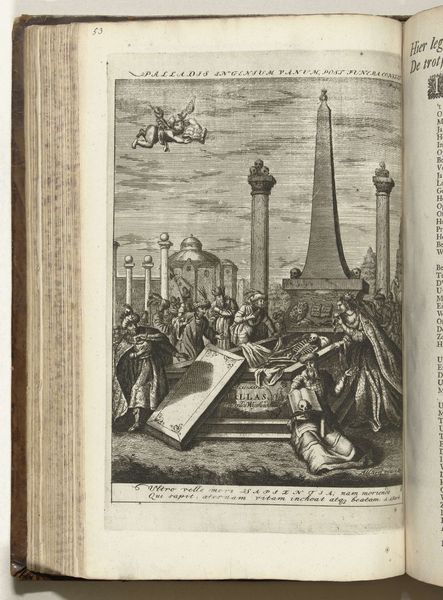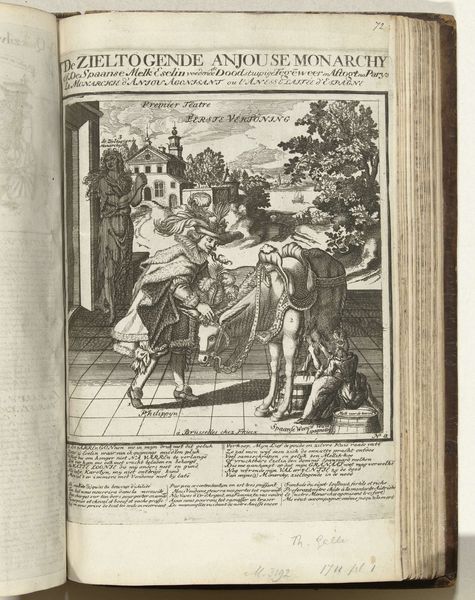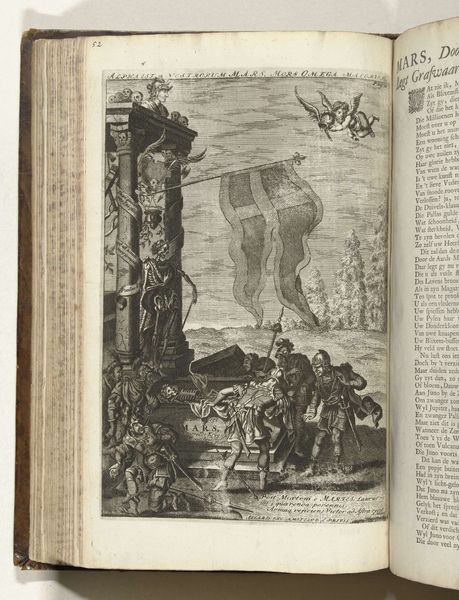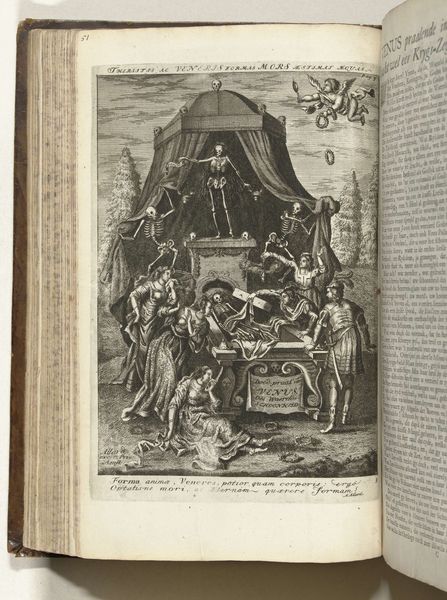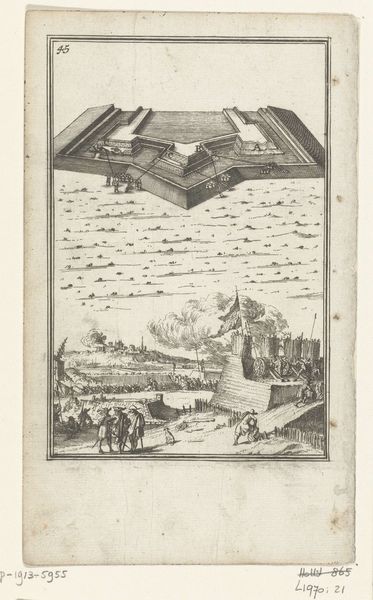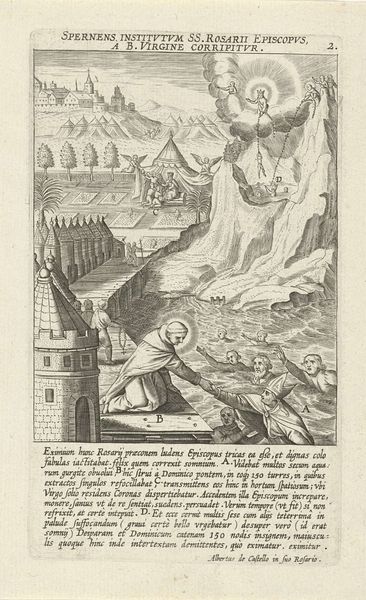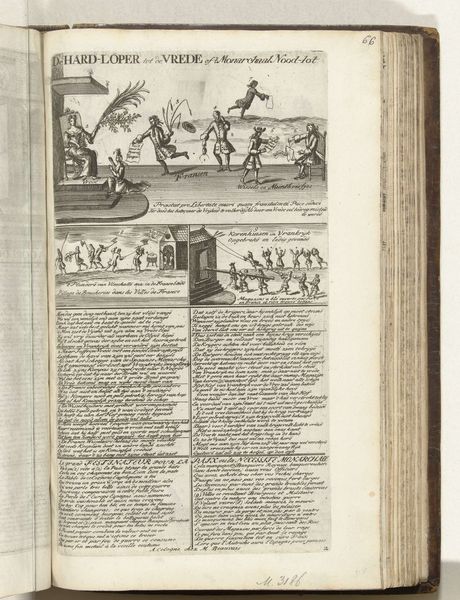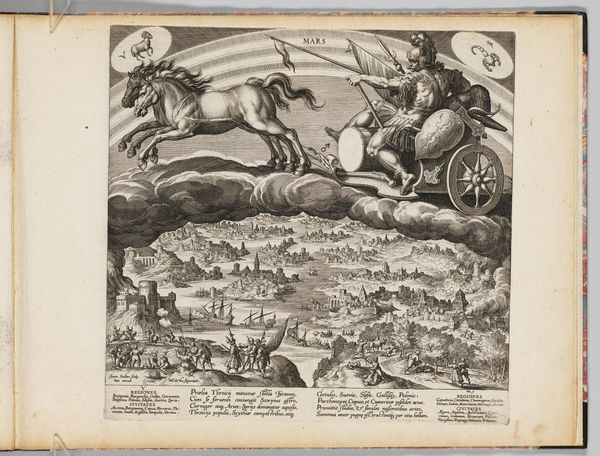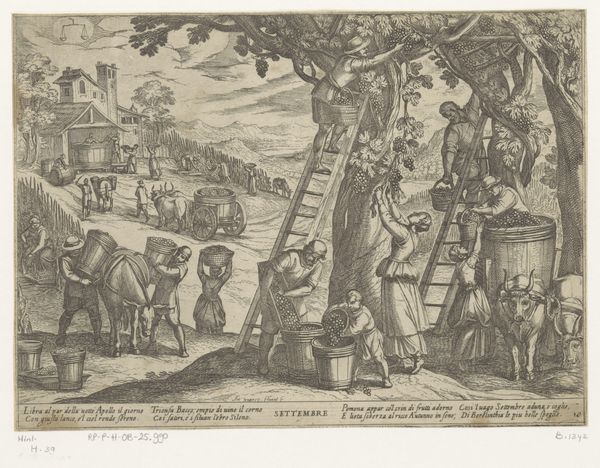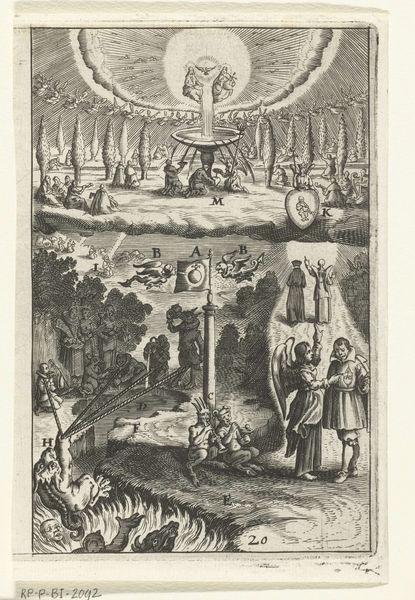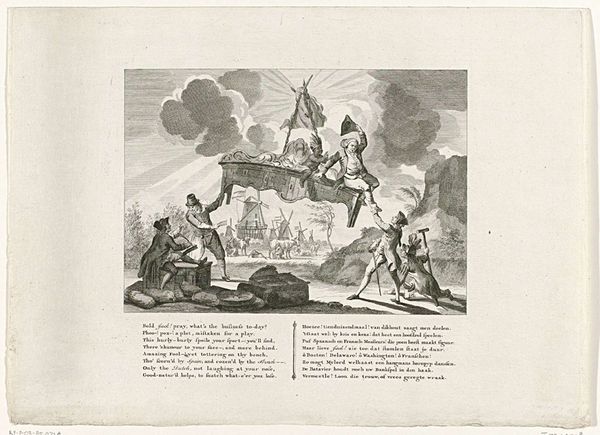
print, engraving
#
baroque
# print
#
landscape
#
figuration
#
coloured pencil
#
pen and pencil
#
line
#
history-painting
#
engraving
Dimensions: height 315 mm, width 200 mm
Copyright: Rijks Museum: Open Domain
Curator: Today, we are examining "Het geopende graf van Hercules," or "The Opened Grave of Hercules," a print created by Carel Allard around 1707-1708. It’s currently held at the Rijksmuseum. Editor: The immediate impression is stark—a funereal landscape sharply delineated by lines. The angular obelisk towering in the background contrasts with the open, ornate coffin in the foreground. There’s a potent sense of finality rendered through precise engraving. Curator: Allard's engraving really emphasizes the line work and composition. Note how the central obelisk serves as a vanishing point, drawing the eye upward, only to be met by those peculiar cherubs… a slightly odd choice. Formally, how does the rigid, controlled style contribute to the overall theme? Editor: Considering the material execution, engraving provided Allard with a specific capacity to produce multiples, to disseminate this scene widely—it brings up ideas about democratizing heroic narratives. Think of the labor involved, the meticulous cutting of the plate to render these precise, almost mathematical lines, meant to circulate among the populace. That craft, that toil, becomes integral to our understanding. Curator: A valid point. But also observe how the artist masterfully utilizes contrasting tones. The crosshatching, especially around Hercules’s exposed remains, creates depth, making the figures seemingly leap from the page. It's visually quite dynamic given its stillness. The eye is immediately drawn to this focal point. Editor: It's impossible to ignore the implications of material consumption when viewing prints like these. Where was this printed? Who purchased and viewed it? Was it a solitary devotional object, or circulated within a print market, driving further cultural production? Understanding these circuits changes our perception. The wear on this print suggests considerable handling and exposure. Curator: So, we find ourselves with the hero's lifeless body on display, rendered meticulously by Allard’s capable hand and considered deployment of line and contrast. Even in death, the heroic is on full view. Editor: And it underscores the material processes that bring mythology to the masses, turning mortality into an industry of representation. Thank you.
Comments
No comments
Be the first to comment and join the conversation on the ultimate creative platform.
